How the Soccer Ball Could Save the Golf Course
Enter the sport of footgolf, which is exactly what it sounds like
/https://tf-cmsv2-smithsonianmag-media.s3.amazonaws.com/filer/51/74/5174e5a6-ed5e-43d4-822a-46c90b179921/42-51969699.jpg)
On a foggy gray morning in San Francisco, J. Ramon Estevez squats on his hams on the grass, brown and scruffy from years of drought. He squints, lining up a putt on the Gleneagles Golf Course, and in a moment, he stands, backs up a step and takes his best shot. He kicks, and a soccer ball rolls across the grass and drops into hole number 1.
Estevez and game partner Tighe O’Sullivan are just beginning a round of footgolf, a novel fusion between one of the world’s simplest ball games and one of its most exclusive. The game, just several years old, combines the etiquette, rules and rolling hills of golf with the ball and the basic footwork of soccer.
“It’s 99 percent golf, minus the equipment,” says O’Sullivan, who has been playing soccer since early grade school and played his first round of footgolf in October, 2012, about the time he and Estevez cofounded the California FootGolf Association.
Estevez, also a lifelong soccer player and the organization’s managing director, says footgolf is believed to have originated in Holland in 2008 or 2009. It spread to Argentina next, where the game has drawn a huge participant base from the country’s soccer loving population. In 2012, footgolf appeared in the United States. By the end of that year, there were two footgolf courses in the United States, each one installed on the existing green of a traditional golf course.
Then, the sport exploded. By the end of 2013, Estevez says, there were 50 American footgolf courses, and by the end of last year, 300. This year, Estevez—who is also a board member of the U.S. FootGolf Association—estimates there will be at least 750 footgolf courses, and possibly as many as 1,000. It may now be the fastest growing sport in the world.
The objective in footgolf is simple: Players try to knock a regulation size-5 soccer ball (a little over 8.5 inches in diameter) into a 21-inch-wide hole in as few kicks as they can. Since a person cannot kick a soccer ball nearly as far as one can hit a golf ball—which even amateur players can drive hundreds of yards—footgolf courses are made smaller than traditional golf courses. Eighteen footgolf holes, for example, can be played on the same expanse that covers a nine-hole golf course. This means the game generally plays about twice as fast as a round of golf.
While the rules of footgolf are virtually identical to those of golf, the unique physics of propelling a soccer ball require particular play strategies. For example, a soccer ball will roll down a slope much more easily than a golf ball, which may come to a halt on a hillside and settle into even the trimmest grass. So, says Estevez, the footgolfer must give particular consideration to the contours of the course. The physics of a soccer ball play to the footgolfer’s advantage in other ways; it rolls over sand traps more buoyantly than a golf ball, and when kicked into a pond, a soccer ball will not only float but usually blow to the shore in just several minutes (albeit still involving a penalty stroke on the player with the errant kick.)
It also means one needn’t wade into the water in their non-cleated golf shoes and argyle socks—both normal pieces of footgolf attire. Golf shorts and a polo shirt are also standard in league play, though Estevez says the dress code of a given golf course always has the final say over what is worn during a game.
Par for an 18-hole footgolf course is usually slightly lower than that of a golf course—in the high 60s rather than 72. Requiring a little less finesse and specialized skill than golf, since there is no need to swing a club, an average player can come in around par, a great footgolfer 15 below. It is this simplicity that makes footgolf so accessible: the game can be easily played by anyone who is at all familiar with the bounce of a soccer ball—and who, on this planet, is not?
While rumors circulate of conflicts arising between golfers and footgolfers, the two sports seem to be mostly coexisting in peace. Nancy Bunton, the City of Fort Worth’s director of golf, says conflicts rarely arise on her golf courses, where footgolf installations have recently been placed. That, she says, is partly because golfers know that their game might actually depend on the presence of footgolfers.
“Our golfers understand that we are trying to bring in revenue to support the existence of the golf course itself,” Bunton says.
Indeed, the game of golf is struggling to stay afloat. Five million golfers have quit the sport in the past decade, according to the New York Times, and of 25 million golfers still playing in America, another 5 million are reportedly liable to quit in the coming years.
Golf’s main problem, according to Tony Martinez, the director of golf at Keeton Park Golf Course in Dallas, is the nation’s changing demographics. Most people today, he says, don’t have the wherewithal to spend a day golfing. For many, the game takes too long, is too expensive to play, and requires a considerable amount of equipment. Worse, there is a stark shortage of interest among younger people, which leaves the iconic game of gentlemen and members-only country clubs poised to pass into oblivion as the golfing demographic grows older.
This is why footgolf, with its faster games and minimal equipment costs, is becoming a valuable new revenue stream where green fees have been petering away. Martinez says attendance at his golf courses has declined while the soccer fields just outside the entrance to Grover Keeton Park are routinely packed with people, all watching and playing the world’s most enduring sport.
“I see footgolf as a way to bring those people in my gate,” Martinez says.
In Fort Worth, golf courses were crowded a decade ago, says Bunton, the city’s director of golf. Today, however, golf course managers are hungry for attendance. Seeing an opportunity last fall, the city installed a 9-hole footgolf course on a 6-hole practice golf course.
“We wanted to generate additional play in any form on a golf course,” Bunton says. Demand to play has been so high that the city more recently placed 18 footgolf holes on the grass of the 9-hole Sycamore Creek Golf Course. Bunton says youth and adult soccer leagues, church and school groups and private birthday parties regularly reserve time to play footgolf.
Most footgolfers seem to be soccer players who, prior to the advent of footgolf, had little reason ever to visit a golf course. Some may have soccer-related injuries and are looking for a lesser impact way to keep kicking their favorite ball, says O’Sullivan, who himself has been troubled recently by a painful knee injury. While some new footgolfers use the sport as a stepping stone toward golf, many—perhaps most—do not, and it is clear that footgolf has become a viable game in and of itself. Footgolf associations and leagues have formed across the world. There are championships, and star players, and televised games.
Even Martinez, a dedicated golfer and vice-president of the Northern Texas PGA, isn’t concerned with seeing footgolfers graduating to traditional golf; he just wants more people using golf courses. Now, after watching his clientele diminish over the years, footgolf is bringing people—including women and children who might never have otherwise visited a golf course—back onto the grass.
Estevez believes it is only a matter of time before footgolfers on a golf course are as commonplace as snowboarders are today on a ski slope.
“A lot of these golf course managers saw the explosion in snowboarding,” Estevez says. “Now they’re remembering that and thinking, ‘I’m not going to be the guy on the sideline because I didn’t give footgolf a shot.’”
In San Francisco, the sun has broken through the hazy summer fog. O’Sullivan places his ball on the grass about 150 feet from an orange flag on a pole marking hole number 10. He steps back several paces, and with focus advances and kicks. Two bystanders lugging golf clubs turn their heads sharply to the left, watching as a soccer ball sails over the fairway.
/https://tf-cmsv2-smithsonianmag-media.s3.amazonaws.com/accounts/headshot/Off-Road-alastair-bland-240.jpg)
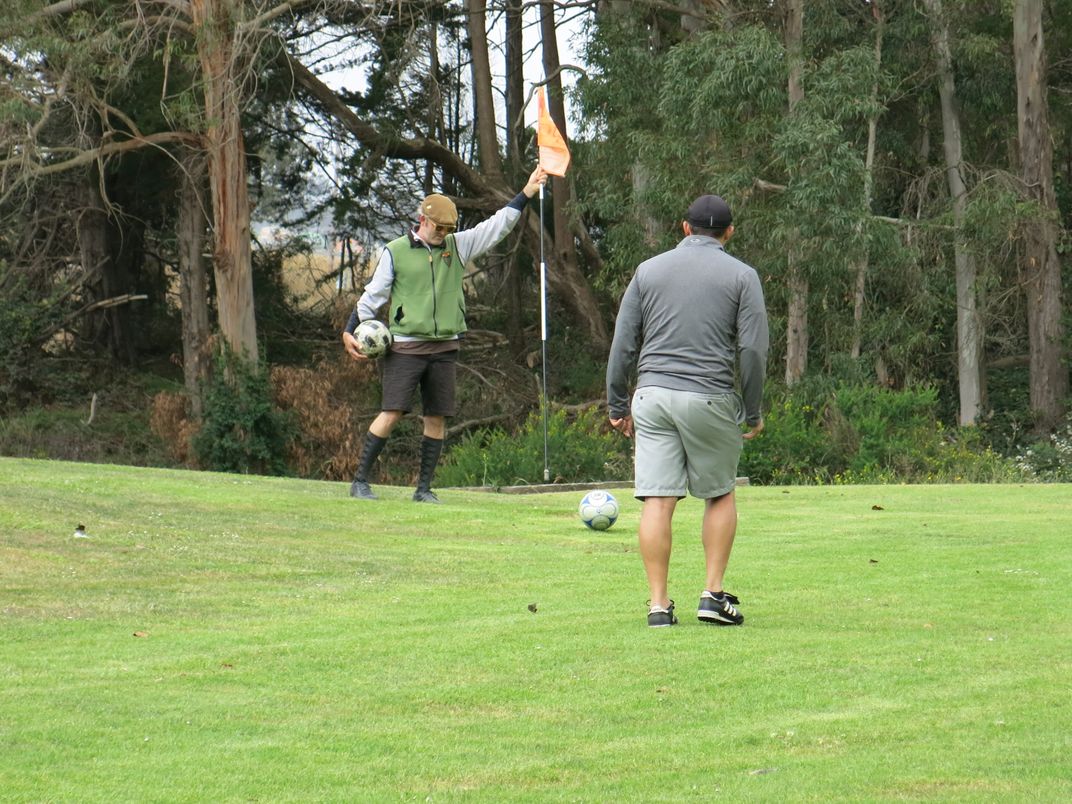
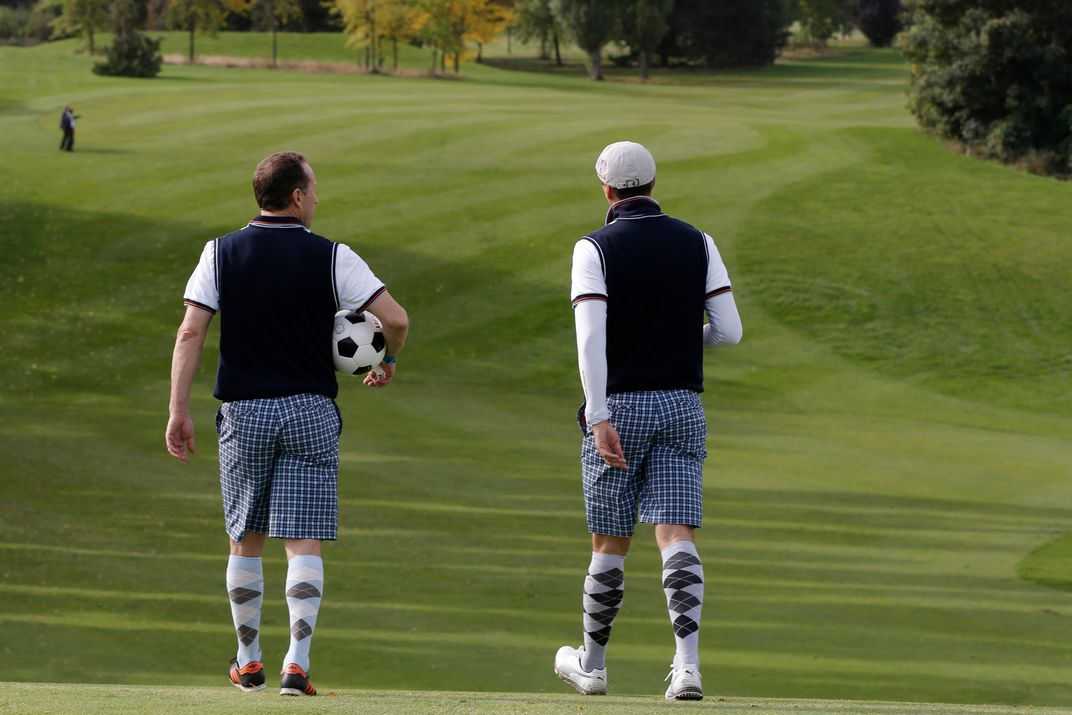
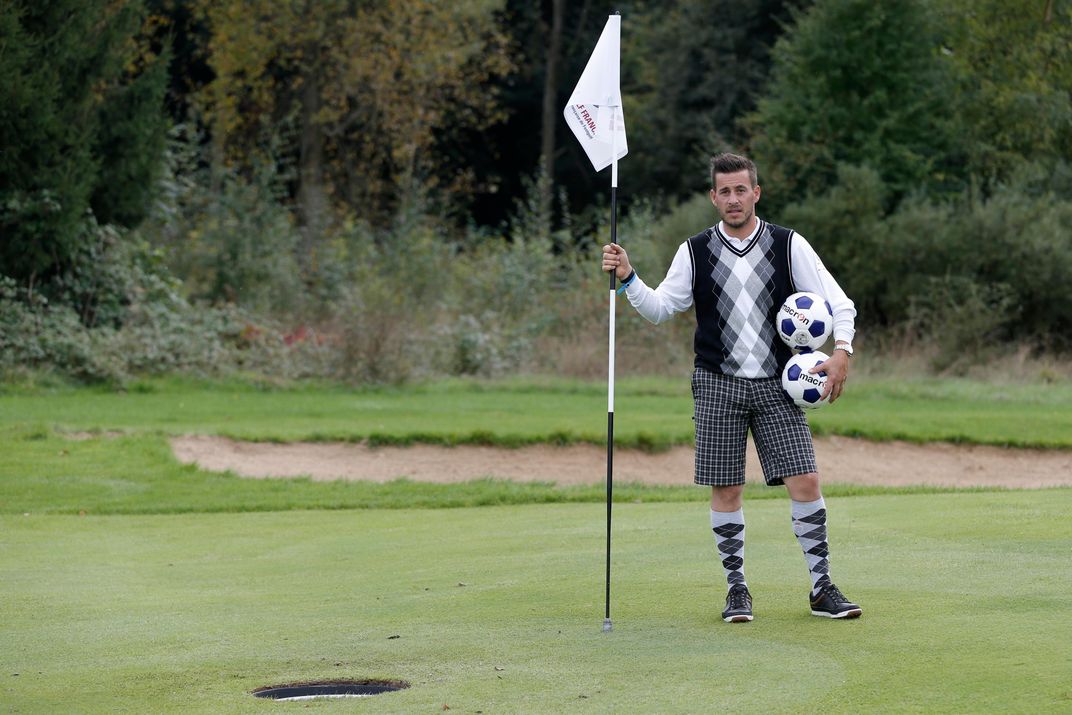
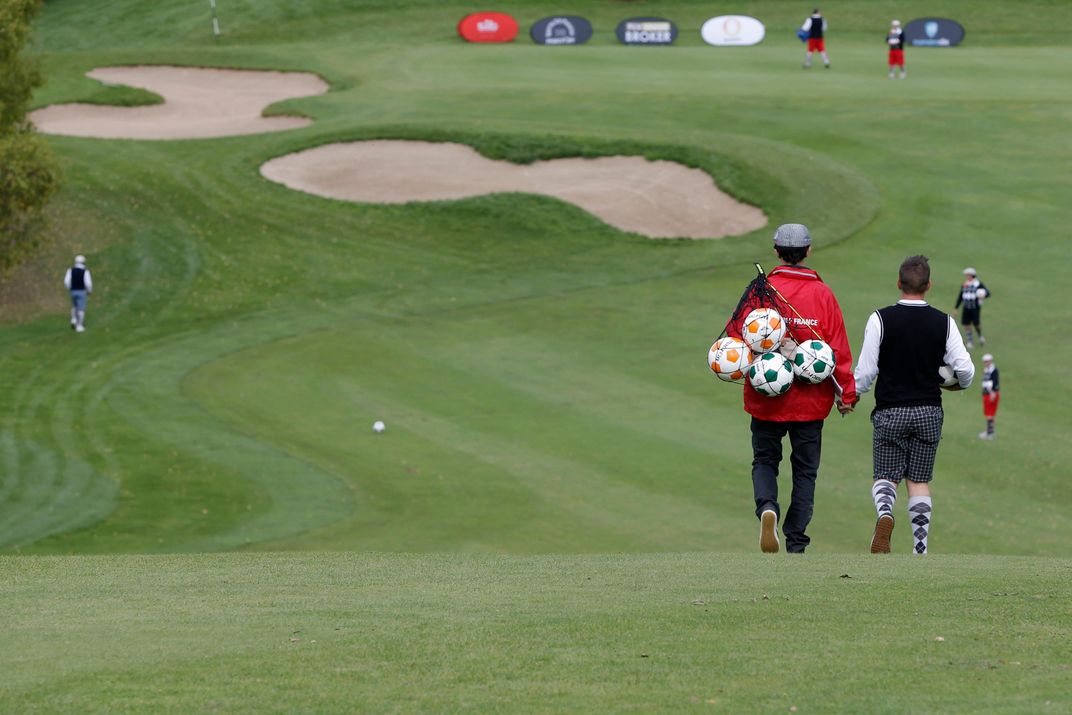
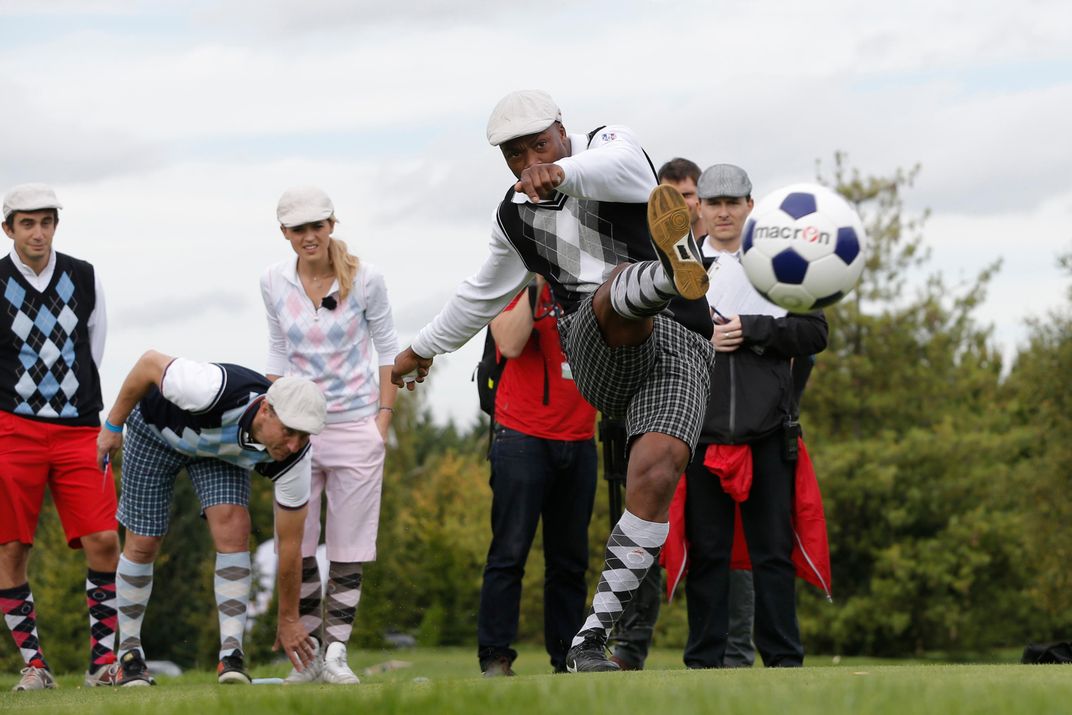
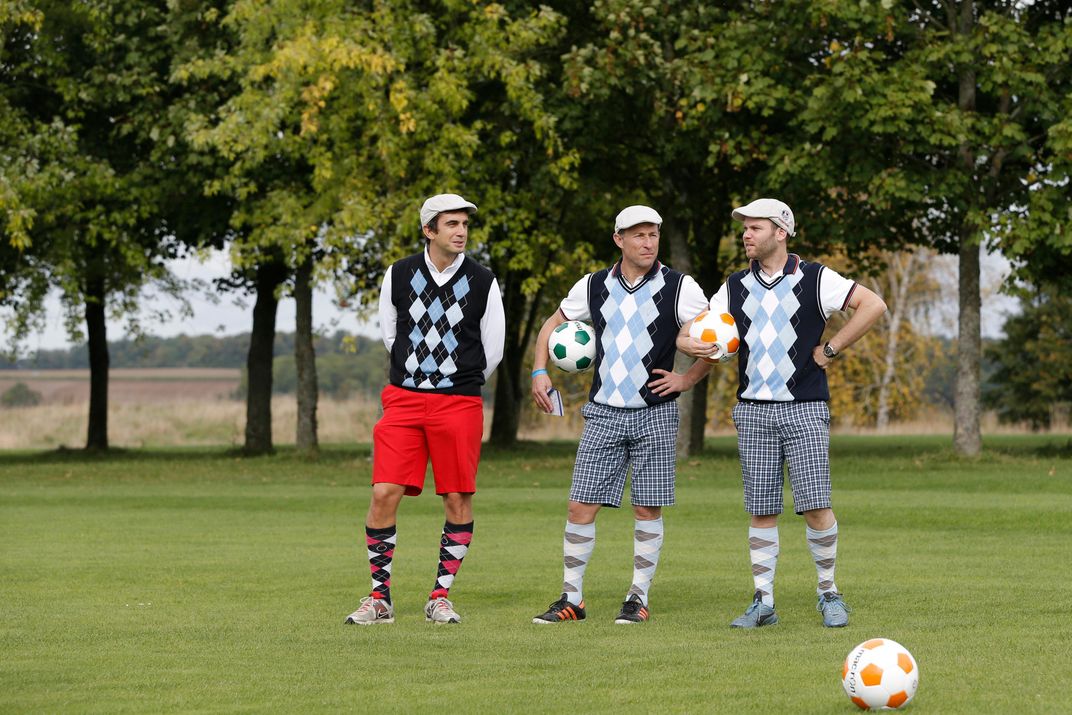
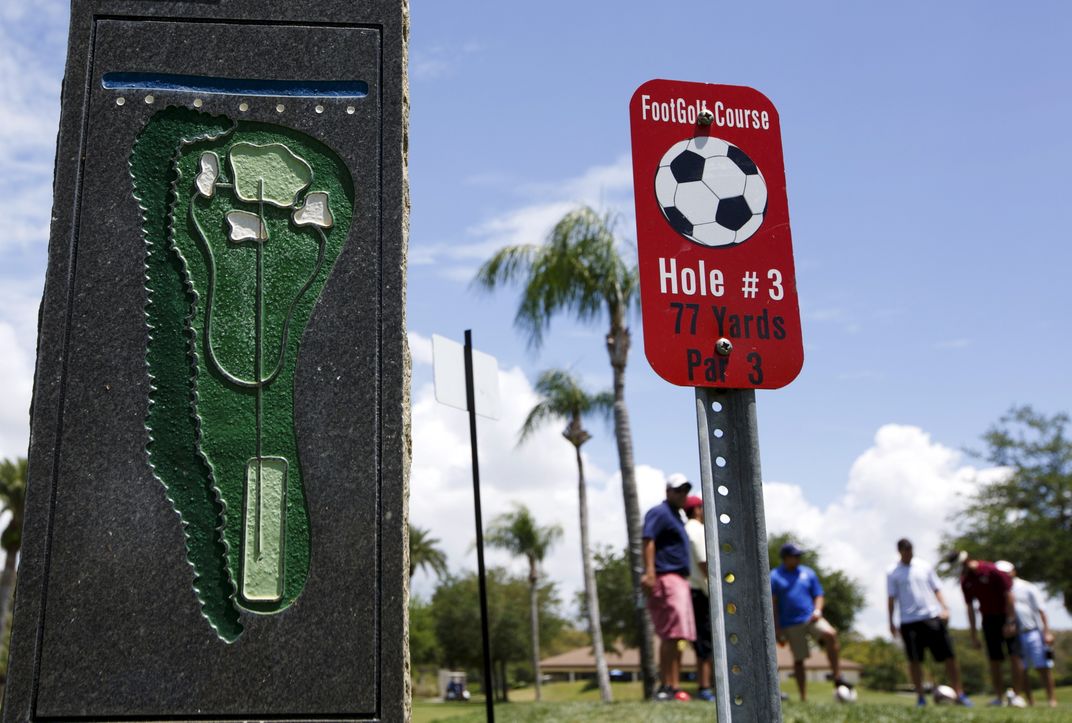
/https://tf-cmsv2-smithsonianmag-media.s3.amazonaws.com/accounts/headshot/Off-Road-alastair-bland-240.jpg)